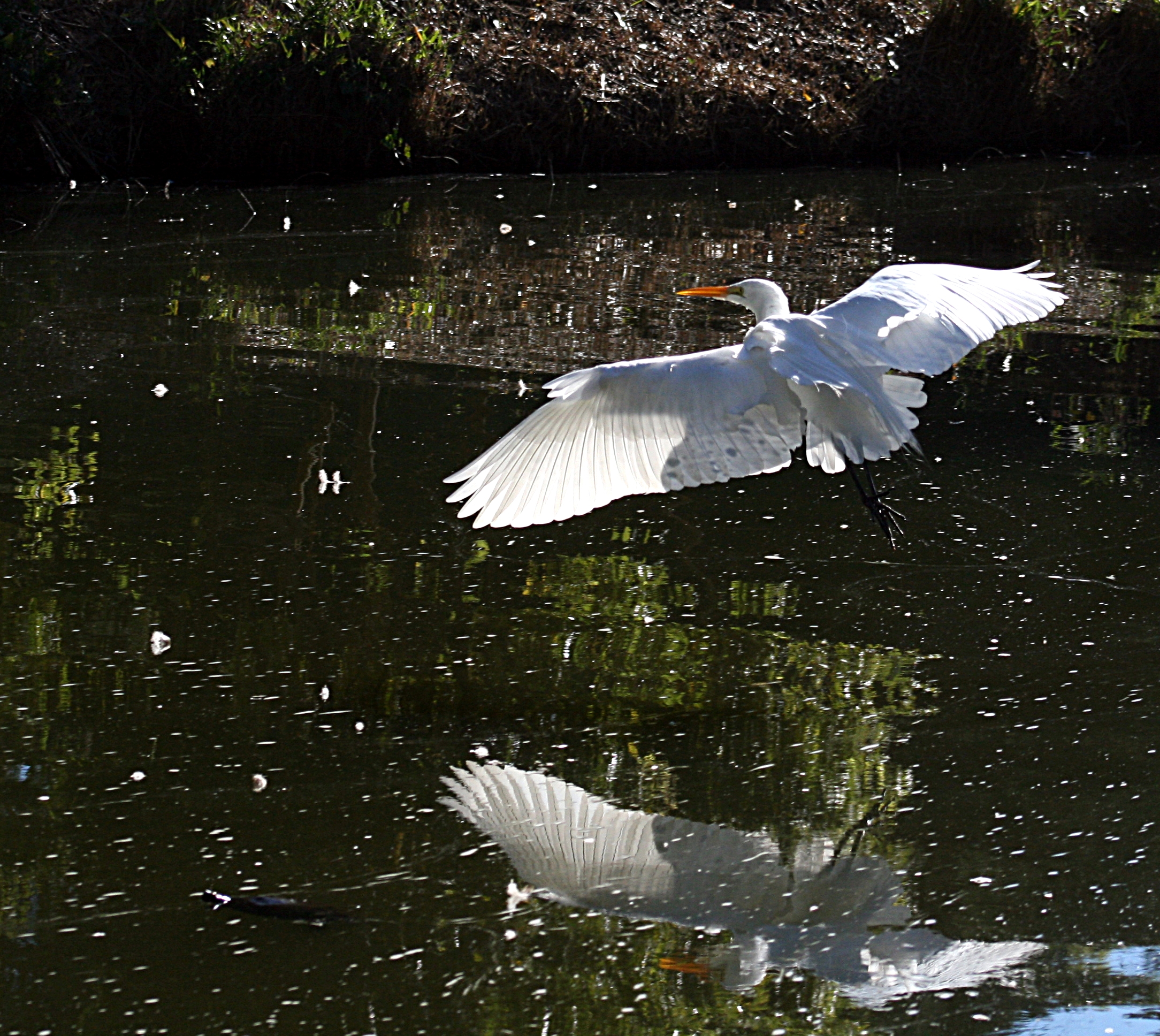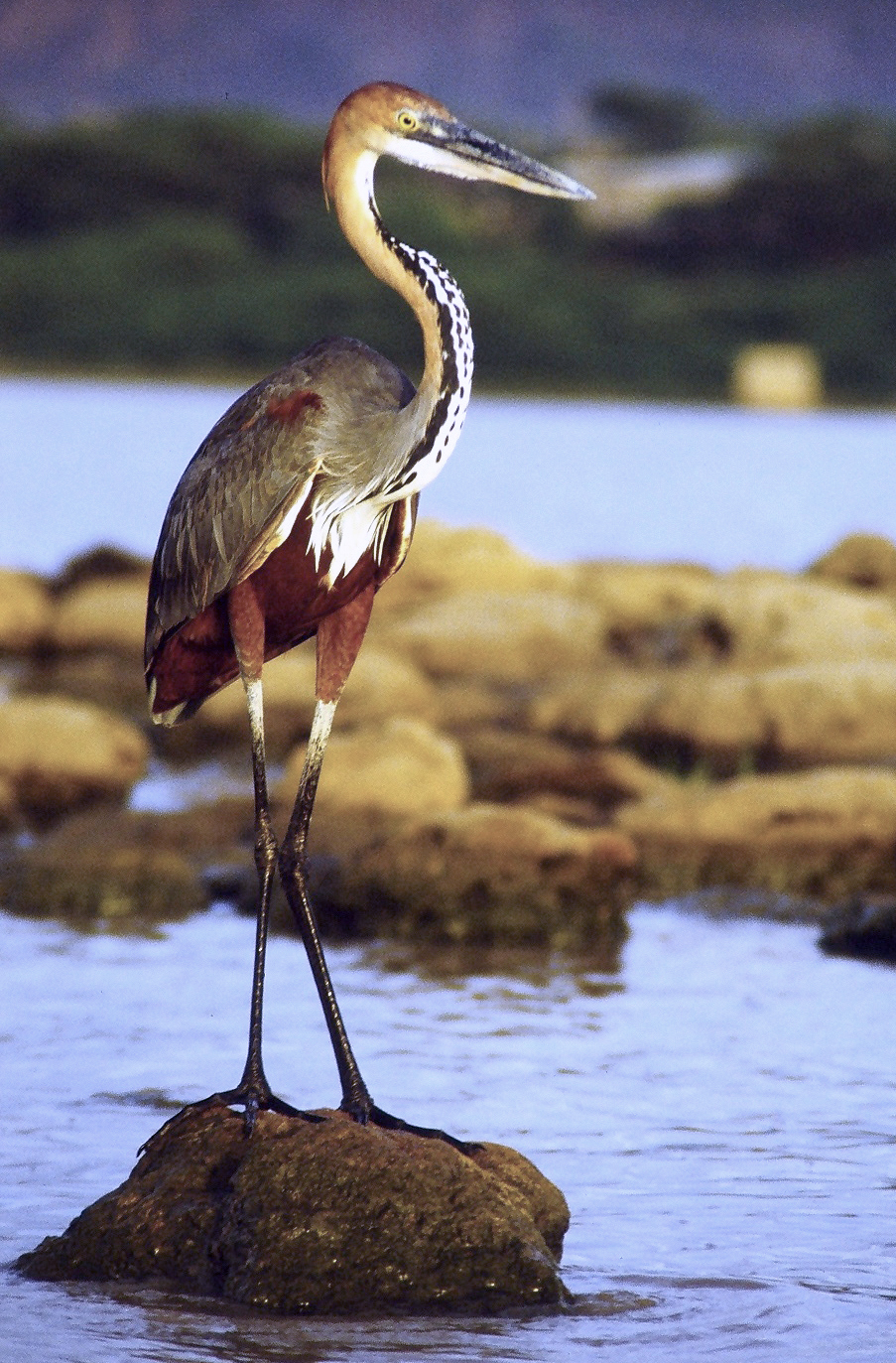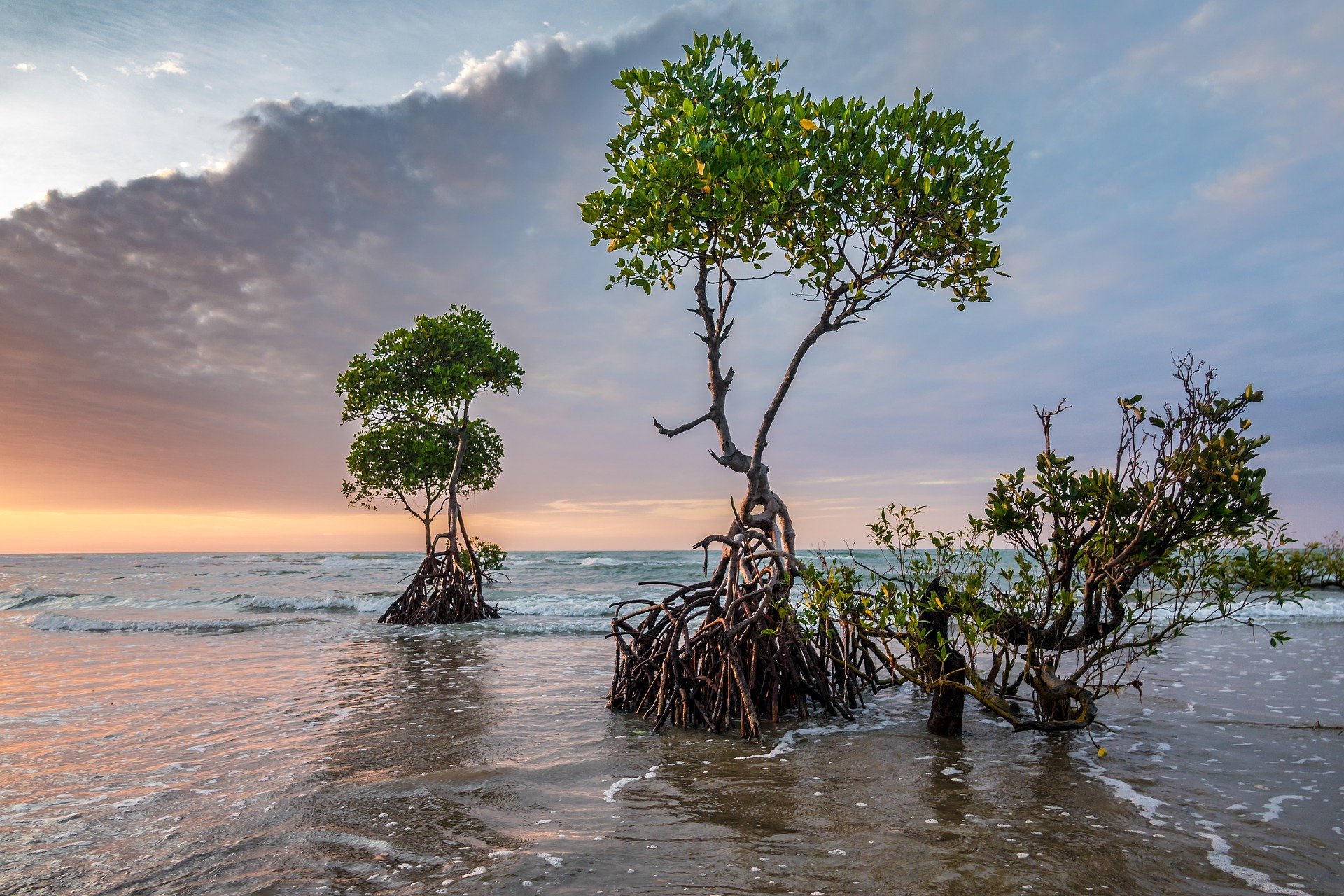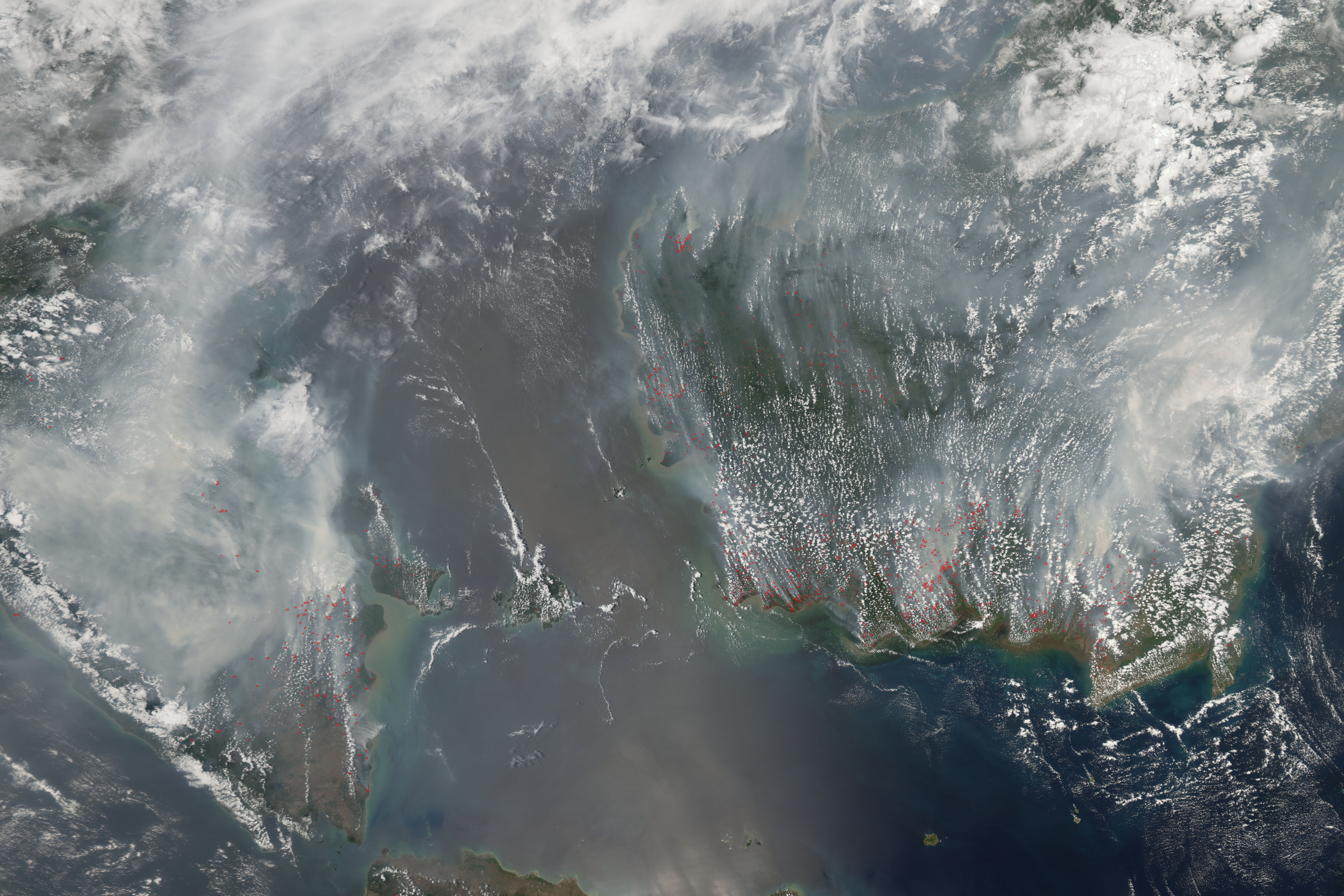|
Kokkilai Lagoon
Kokkilai lagoon (; ) is an estuarine lagoon in Mullaitivu District and Trincomalee District, north-east Sri Lanka. The town of Kokkilai is located on a sand bar between the lagoon and the Indian Ocean. The lagoon is fed by a number of small rivers, including Churiyan Aru. It is linked to the sea by a narrow channel that is very often blocked by the sand bar. The lagoon's water is brackish. The lagoon is surrounded by a densely populated region containing cultivated land, scrubland and open forest. The land is used for prawn fishing, paddy cultivation and some shifting cultivation. The lagoon has extensive sea grass beds and small areas of mangrove swamp and mudflats. The shallow waters of the lagoon attracts a wide variety of water birds including pelican, cormorant, herons, egrets, wild duck, stork, waders and pink flamingoes. The lagoon was designated a wildlife sanctuary A nature reserve (also known as a wildlife refuge, wildlife sanctuary, biosphere reserve or bior ... [...More Info...] [...Related Items...] OR: [Wikipedia] [Google] [Baidu] |
Mullaitivu District
Mullaitivu District (, ; , ) is one of the 25 districts of Sri Lanka, the second level administrative division of the country. The district is administered by a District Secretariat headed by a District Secretary (previously known as a Government Agent) appointed by the central government of Sri Lanka. The capital of the district is the town of Mullaitivu. History Parts of present-day Mullaitivu District were ruled by the pre-colonial Jaffna kingdom. The district then came under Portuguese, Dutch and British control. In 1815 the British gained control of the entire island of Ceylon. They divided the island into three ethnic based administrative structures: Low Country Sinhalese, Kandyan Sinhalese and Tamil. The district, which was then part of Vanni District, was part of the Tamil administration. In 1833, in accordance with the recommendations of the Colebrooke-Cameron Commission, the ethnic based administrative structures were unified into a single administration divided ... [...More Info...] [...Related Items...] OR: [Wikipedia] [Google] [Baidu] |
Scrubland
Shrubland, scrubland, scrub, brush, or bush is a plant community characterized by vegetation dominance (ecology), dominated by shrubs, often also including grasses, herbaceous plant, herbs, and geophytes. Shrubland may either occur naturally or be the result of human activity. It may be the mature vegetation type in a particular region and remain stable over time, or it may be a transitional community that occurs temporarily as the result of a disturbance, such as fire. A stable state may be maintained by regular natural disturbance such as fire or browsing (predation), browsing. Shrubland may be unsuitable for human habitation because of the danger of fire. The term was coined in 1903. Shrubland species generally show a wide range of adaptations to fire, such as heavy seed production, lignotubers, and fire-induced germination. Botanical structural form In botany and ecology a shrub is defined as a much-branched woody plant less than 8 m high, usually with many plant stem, ... [...More Info...] [...Related Items...] OR: [Wikipedia] [Google] [Baidu] |
Egrets
Egrets ( ) are herons, generally long-legged wading birds, that have white or buff plumage, developing fine plumes (usually milky white) during the breeding season. Egrets are not a biologically distinct group from herons and have the same build. Biology Egrets hold a separate group with bitterns and herons within the 74 species found in the bird family Ardeidae. Many egrets are members of the genera ''Egretta'' or '' Ardea'', which also contain other species named as herons rather than egrets. The distinction between a heron and an egret is rather vague, and depends more on appearance than biology. The word "egret" comes from the French word ''aigrette'' that means both "silver heron" and "brush", referring to the long, filamentous feathers that seem to cascade down an egret's back during the breeding season (also called "egrets"). Several of the egrets have been reclassified from one genus to another in recent years; the great egret, for example, has been classified as a me ... [...More Info...] [...Related Items...] OR: [Wikipedia] [Google] [Baidu] |
Herons
Herons are long-legged, long-necked, freshwater and coastal birds in the family Ardeidae, with 75 recognised species, some of which are referred to as egrets or bitterns rather than herons. Members of the genus '' Botaurus'' are referred to as bitterns, and, together with the zigzag heron, or zigzag bittern, in the monotypic genus ''Zebrilus'', form a monophyletic group within the Ardeidae. Egrets do not form a biologically distinct group from herons, and tend to be named differently because they are mainly white or have decorative plumes in breeding plumage. Herons, by evolutionary adaptation, have long beaks. The classification of the individual heron/egret species is fraught with difficulty, and no clear consensus exists about the correct placement of many species into either of the two major genera, '' Ardea'' and '' Egretta''. Similarly, the relationships of the genera in the family are not completely resolved. However, one species formerly considered to constitute a sepa ... [...More Info...] [...Related Items...] OR: [Wikipedia] [Google] [Baidu] |
Cormorant
Phalacrocoracidae is a family of approximately 40 species of aquatic birds commonly known as cormorants and shags. Several different classifications of the family have been proposed, but in 2021 the International Ornithologists' Union (IOU) adopted a consensus taxonomy of seven genera. The great cormorant (''Phalacrocorax carbo'') and the common shag (''Gulosus aristotelis'') are the only two species of the family commonly encountered in Britain and Ireland, and the names "cormorant" and "shag" have been later assigned to different species in the family somewhat haphazardly. Cormorants and shags are medium-to-large birds, with body weight in the range of and wing span of . The majority of species have dark feathers. The bill is long, thin and hooked. Their feet have webbing between all four toes. All species are fish-eaters, catching the prey by diving from the surface. They are excellent divers, and under water they propel themselves with their feet with help from their wing ... [...More Info...] [...Related Items...] OR: [Wikipedia] [Google] [Baidu] |
Pelican
Pelicans (genus ''Pelecanus'') are a genus of large water birds that make up the family Pelecanidae. They are characterized by a long beak and a large throat pouch used for catching prey and draining water from the scooped-up contents before swallowing. They have predominantly pale plumage, except for the Brown pelican, brown and Peruvian pelicans. The bills, pouches, and bare facial skin of all pelicans become brightly coloured before the breeding season. The eight living pelican species have a patchy, seasonally-dependent yet global distribution, ranging latitude, latitudinally from the tropics to the temperate zone. Pelicans are absent from interior Amazon Rainforest, Amazonian South America, from polar regions and the open ocean; at least one species is known to migrate to the inland desert of Australia's Red Centre, after heavy rains create temporary lakes. White pelicans are also observed at the American state of Utah's Great Salt Lake, for example, some 600 miles (965&n ... [...More Info...] [...Related Items...] OR: [Wikipedia] [Google] [Baidu] |
Water Bird
A water bird, alternatively waterbird or aquatic bird, is a bird that lives on or around water. In some definitions, the term ''water bird'' is especially applied to birds in freshwater ecosystems, although others make no distinction from seabirds that inhabit marine environments. Some water birds (e.g. wading birds) are more terrestrial while others (e.g. waterfowls) are more aquatic, and their adaptations will vary depending on their environment. These adaptations include webbed feet, beaks, and legs adapted to feed in the water, and the ability to dive from the surface or the air to catch prey in water. The term ''aquatic bird'' is sometimes also used in this context. A related term that has a narrower meaning is waterfowl. Some piscivorous birds of prey, such as ospreys, sea eagles, fish eagles, fish owls, and fishing owls, hunt aquatic prey but do not stay in water for long and live predominantly over dry land, and are not considered water birds. The term waterbird ... [...More Info...] [...Related Items...] OR: [Wikipedia] [Google] [Baidu] |
Mudflats
Mudflats or mud flats, also known as tidal flats or, in Ireland, slob or slobs, are coastal wetlands that form in intertidal areas where sediments have been deposited by tides or rivers. A global analysis published in 2019 suggested that tidal flat ecosystems are as extensive globally as mangroves, covering at least of the Earth's surface. / They are found in sheltered areas such as bays, bayous, lagoons, and estuaries; they are also seen in freshwater lakes and salty lakes (or inland seas) alike, wherein many rivers and creeks end. Mudflats may be viewed geologically as exposed layers of bay mud, resulting from deposition of estuarine silts, clays and aquatic animal detritus. Most of the sediment within a mudflat is within the intertidal zone, and thus the flat is submerged and exposed approximately twice daily. A recent global remote sensing analysis estimated that approximately 50% of the global extent of tidal flats occurs within eight countries (Indonesia, China, Au ... [...More Info...] [...Related Items...] OR: [Wikipedia] [Google] [Baidu] |
Mangrove Swamp
Mangrove forests, also called mangrove swamps, mangrove thickets or mangals, are productive wetlands that occur in coastal intertidal zones. Mangrove forests grow mainly at tropical and subtropical latitudes because mangrove trees cannot withstand freezing temperatures. There are about 80 different species of mangroves, all of which grow in areas with low-oxygen soil, where slow-moving waters allow fine sediments to accumulate.What is a mangrove forest? National Ocean Service, NOAA. Updated: 25 March 2021. Retrieved: 4 October 2021. Many mangrove forests can be recognised by their dense tangle of prop roots that make the trees appear to be standing on stilts above the water. This tangle of roots allows the trees to handle the daily rise and fall of tides, as most mangroves get flooded at least twice per day. The r ... [...More Info...] [...Related Items...] OR: [Wikipedia] [Google] [Baidu] |
Sea Grass
Seagrasses are the only flowering plants which grow in marine (ocean), marine environments. There are about 60 species of fully marine seagrasses which belong to four Family (biology), families (Posidoniaceae, Zosteraceae, Hydrocharitaceae and Cymodoceaceae), all in the order Alismatales (in the clade of monocotyledons). Seagrasses evolved from terrestrial plants which recolonised the ocean 70 to 100 million years ago. The name ''seagrass'' stems from the many species with long and narrow Leaf, leaves, which grow by rhizome extension and often spread across large "Seagrass meadow, meadows" resembling grassland; many species superficially resemble terrestrial grasses of the family Poaceae. Like all autotrophic plants, seagrasses photosynthesize, in the submerged photic zone, and most occur in shallow and sheltered coastal waters anchored in sand or mud bottoms. Most species undergo submarine pollination and complete their life cycle underwater. While it was previously believed ... [...More Info...] [...Related Items...] OR: [Wikipedia] [Google] [Baidu] |
Shifting Cultivation
Shifting cultivation is an agricultural system in which plots of land are cultivated temporarily, then abandoned while post-disturbance fallow vegetation is allowed to freely grow while the cultivator moves on to another plot. The period of cultivation is usually terminated when the soil shows signs of exhaustion or, more commonly, when the field is overrun by weeds. The period of time during which the field is cultivated is usually shorter than the period over which the land is allowed to regenerate by lying fallow. This technique is often used in LEDCs (Less Economically Developed Countries) or LICs (Low Income Countries). In some areas, cultivators use a practice of slash-and-burn as one element of their farming cycle. Others employ land clearing without any burning, and some cultivators are purely human migration, migratory and do not use any cyclical method on a given plot. Sometimes no slashing at all is needed where regrowth is purely of grasses, an outcome not uncommon ... [...More Info...] [...Related Items...] OR: [Wikipedia] [Google] [Baidu] |
Rice
Rice is a cereal grain and in its Domestication, domesticated form is the staple food of over half of the world's population, particularly in Asia and Africa. Rice is the seed of the grass species ''Oryza sativa'' (Asian rice)—or, much less commonly, ''Oryza glaberrima'' (African rice). Asian rice was domesticated in China some 13,500 to 8,200 years ago; African rice was domesticated in Africa about 3,000 years ago. Rice has become commonplace in many cultures worldwide; in 2023, 800 million tons were produced, placing it third after sugarcane and maize. Only some 8% of rice is traded internationally. China, India, and Indonesia are the largest consumers of rice. A substantial amount of the rice produced in developing nations is lost after harvest through factors such as poor transport and storage. Rice yields can be reduced by pests including insects, rodents, and birds, as well as by weeds, and by List of rice diseases, diseases such as rice blast. Traditional rice polyc ... [...More Info...] [...Related Items...] OR: [Wikipedia] [Google] [Baidu] |










